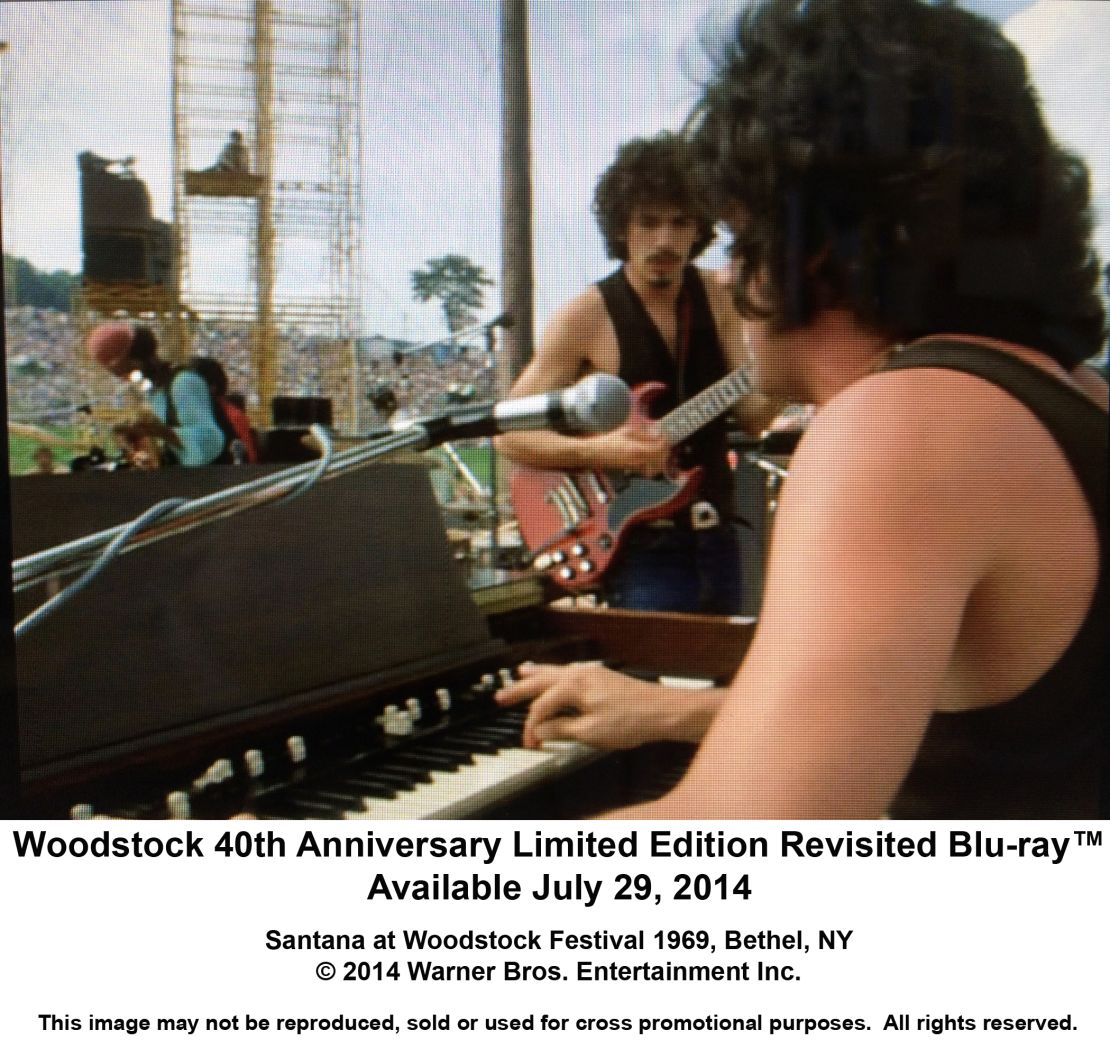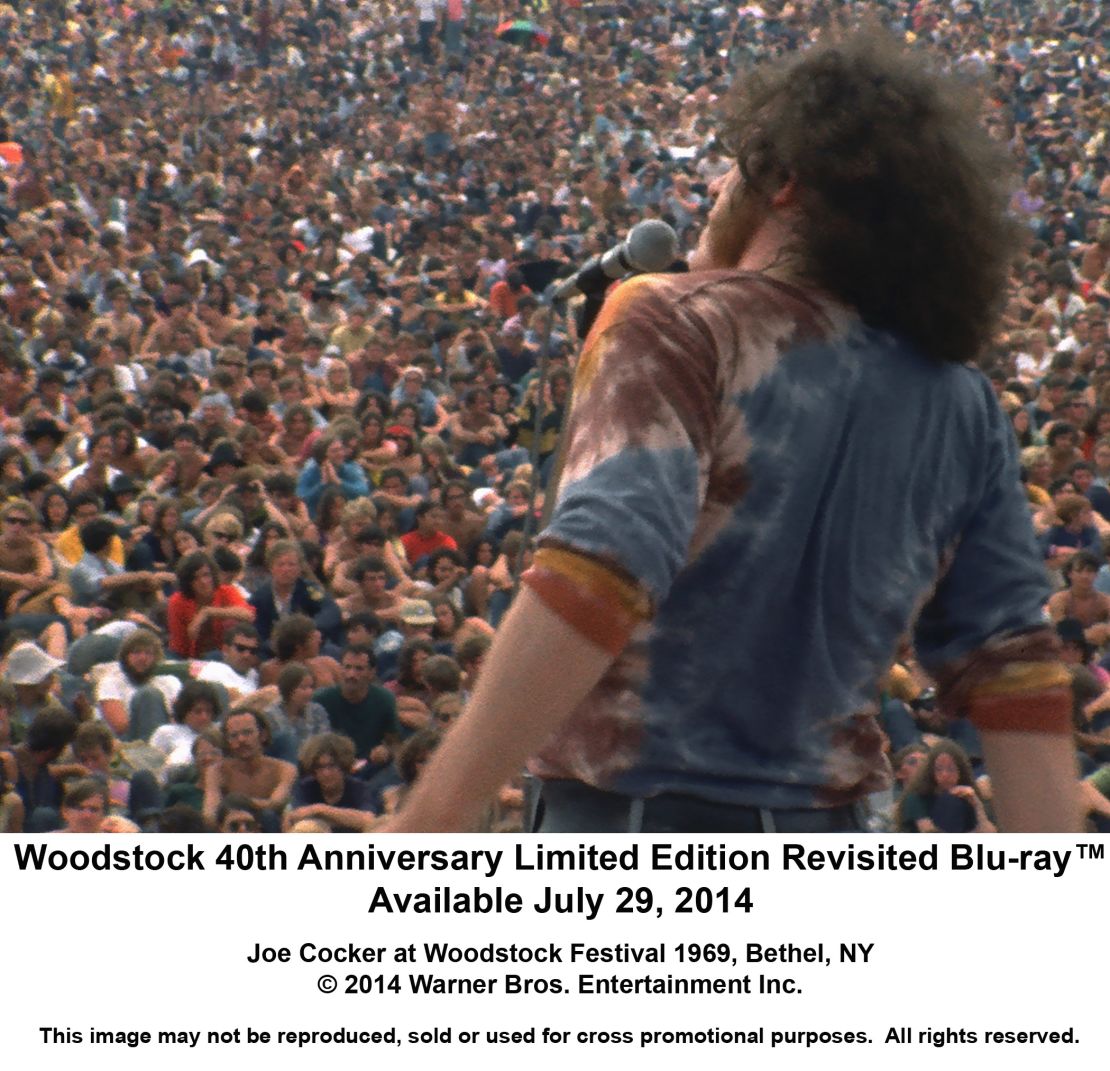Editor’s Note:
Story highlights
The fabled Woodstock Music and Art Fair took place 45 years ago this week
There were massive crowds and bands like The Grateful Dead
Despite rain and lack of food, water and working toilets, it really was "3 Days of Peace & Music"
Officially billed as The Woodstock Music and Art Fair, An Aquarian Exposition, the festival that came to be known, simply, as Woodstock is the stuff of legend.
Friday marks the 45th anniversary of Woodstock, which took place from August 15-18, 1969.
Woodstock didn’t take place in Woodstock, New York, but in Bethel, about 60 miles away.
“It was really called Woodstock because (festival co-creator) Mike Lang thought it had the right vibe,” Bob Spitz, journalist and author of “Barefoot in Babylon: The Creation of the Woodstock Music Festival, 1969” told CNN.
“Woodstock was where Bob Dylan lived,” said Spitz, “It’s where The Band hung out and he just liked the whole feel of the word. No matter where they were gonna have it, it was always going to be the Woodstock Music and Art Fair. Everything about Woodstock has to do with the vibe.”
2009: Folk singer Richie Havens remembers Woodstock
Max Yasgur provided Woodstock’s venue by leasing out his 600-acre dairy farm near the hamlet of White Lake in the Catskill Mountain community of Bethel, New York, 100 miles north of Manhattan.
The posters promised “3 Days of Peace & Music,” but the festival’s initial concept “depends on who you talk to,” said Spitz.
Lang and festival promoter Artie Kornfeld wanted to have a blowout that was “the biggest party the counterculture had ever seen,” said Spitz. “If you talk to their partners, John Roberts and Joel Rosenman, who were the money guys, it was to make a lot of money.”
For the crowd of 350,000 to 450,000 young people in attendance, Woodstock was all about peace and love, and that’s no myth.
“The entire Woodstock festival was peaceful and the kids were respectful because of one word: marijuana,” said Spitz. “Everybody was high. If it had been other drugs it would’ve been chaos. But because of dope and LSD, everything was peaceful there for those three days.”
Festival organizers who had been expecting a crowd of 80,000 to 100,000 people were blindsided when quadruple the crowd showed up. No one was prepared for a surplus of 300,000 people. With no system in place to charge them, Woodstock became a free event.
Cars within a five-mile radius were at a standstill. New York Gov. Nelson Rockefeller declared a state of emergency in White Lake. By Woodstock’s second day, authorities publicly pleaded for anyone who might be on their way to the festival to turn around and go home. Eventually no one could get out or in unless they needed to be airlifted. Festival managers scrambled to fly in 30 extra physicians from New York City.

Santana vocalist Gregg Rolie spoke to CNN while promoting the Blu-ray release of the director’s cut of the 1970 Academy Award-winning documentary “Woodstock: 3 Days of Peace and Music.”
Rolie recalled arriving with the other members of Santana via helicopter.
“We flew in because everybody parked on the highway,” said Rolie. “It was kinda like ‘Close Encounters’ or ‘Field of Dreams,’ you know? ‘If you build it, they will come.’ The highways were closed. Upstate New York was like a parking lot. So we had to fly in on helicopters.”
Santana’s appearance is considered one of the festival highlights. The band played early on, before the first of two downpours that reduced Yasgur’s alfalfa field to a sloppy, slippery slew of mud puddles.
All of Santana’s music was new at the time and the band was virtually unknown. They had not yet released their first album. Woodstock is credited for jumpstarting Santana’s career.
“If you played at Woodstock, you had a career,” said Rolie, who had no idea that the festival’s legacy would resonate so powerfully 45 years later.

Woodstock’s lineup also included Joan Baez, Jefferson Airplane, Janis Joplin, Crosby, Stills, Nash & Young; Joe Cocker, Creedence Clearwater Revival and The Band, among others.
Jimi Hendrix closed the festival. By the time he began his Monday morning set, which included his celebrated rendition of “The Star-Spangled Banner,” the crowd had thinned out to 200,000. Many had to get to work, school, wanted to get a jump on the traffic or simply could not endure the close quarters any longer. Even so, Hendrix had never performed in front of such a big group before and nearly bailed.
Although Woodstock has been lifted onto a pedestal in certain ways, by all accounts the festival lived up to the fable. The fairy tale, though largely drug-laden, was a reality for those in attendance.
iReport: Hazy memories of Woodstock
Watch 'The Sixties'
Watch ‘The Sixties’
It can be difficult to connect the storybook reality with Woodstock’s harsher realities like overflowed toilets, lack of food and water, and a makeshift, 20-bed hospital tent to accommodate roughly 3,000 medical emergencies.
A tractor crushed a teenage boy in a sleeping bag, fatally wounding him. One young man died of a heroin overdose, another died of a burst appendix. A young woman broke her back falling off of stage scaffolding.
In addition, there were about 400 bad acid trips, sprained ankles from sliding in the mud, and many a gashed foot as a result of stepping barefoot on broken glass.
Two babies were born, too. One child arrived in traffic en route to the festival, and the other was delivered in a hospital after the mother was airlifted out of the field.
A lot of sex was going on at Woodstock and, according to Spitz, a lot of women forgot to pack their birth control so supplies of birth control pills were flown in.
For an event where facilities were strained far past capacity, not a single fight or incident of violence erupted among the crowd, which endured near-unbearable conditions.
Town elders, residents, shopkeepers and local police couldn’t get over how courteous and considerate the kids were – all 450,000 or so of them.
Woodstock’s financial backers were not so lucky. They took a bath – and not a mud one – to the tune of $1.3 million.
Spitz called Woodstock “the beginning of the end of the ’60s” because it, along with the moon landing, represented a bright period after the deaths of John F. Kennedy, Malcolm X, the Rev. Martin Luther King, Jr. and Robert Kennedy, and before the breakup of the Beatles and the deaths of Janis Joplin, Jimi Hendrix and Jim Morrison.
Woodstock is legendary for many reasons, but what made it magical was the value people placed on one another.
“If these are the kids that are going to inherit the world,” Max Yasgur said at the time, “I don’t fear for it.”



